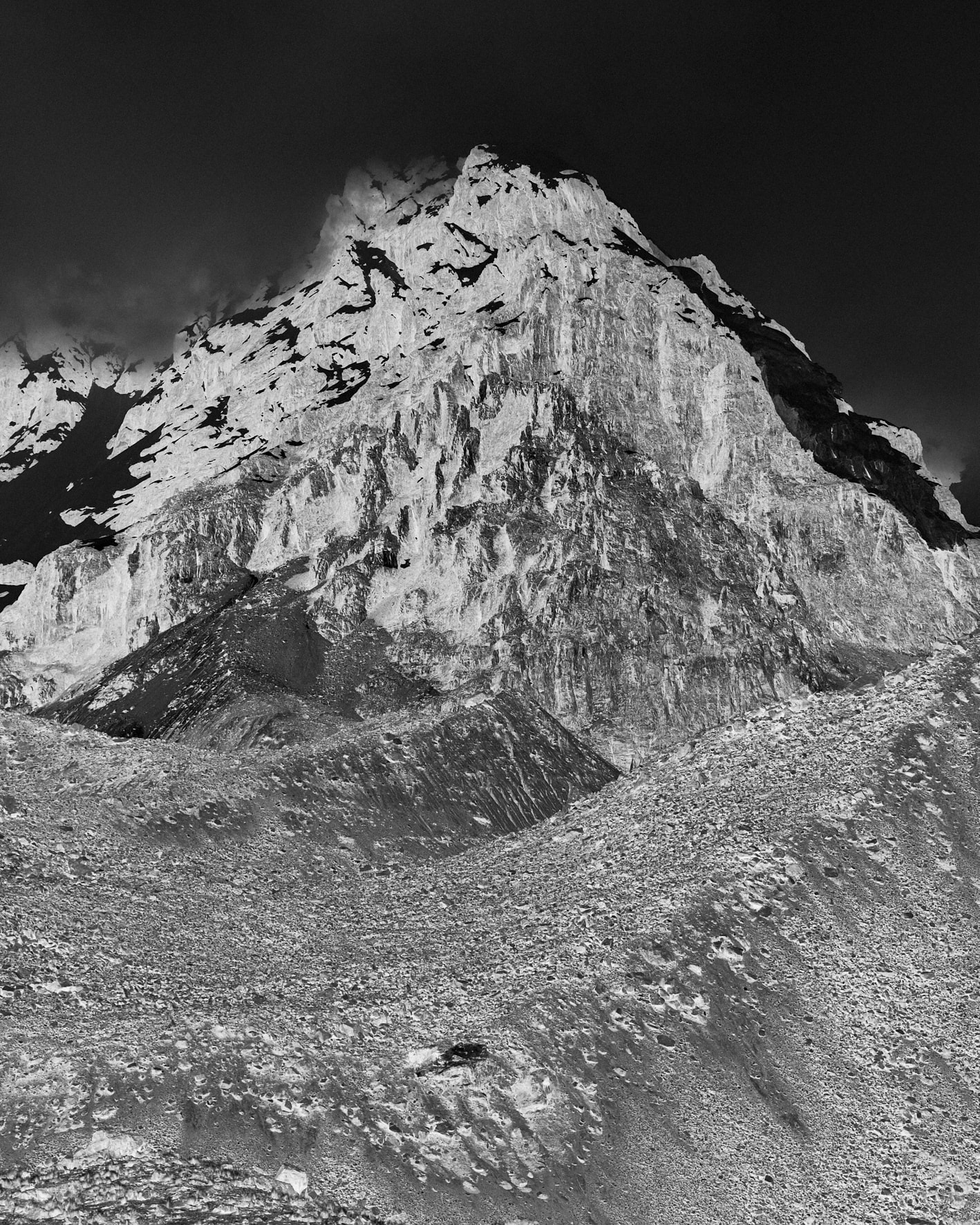

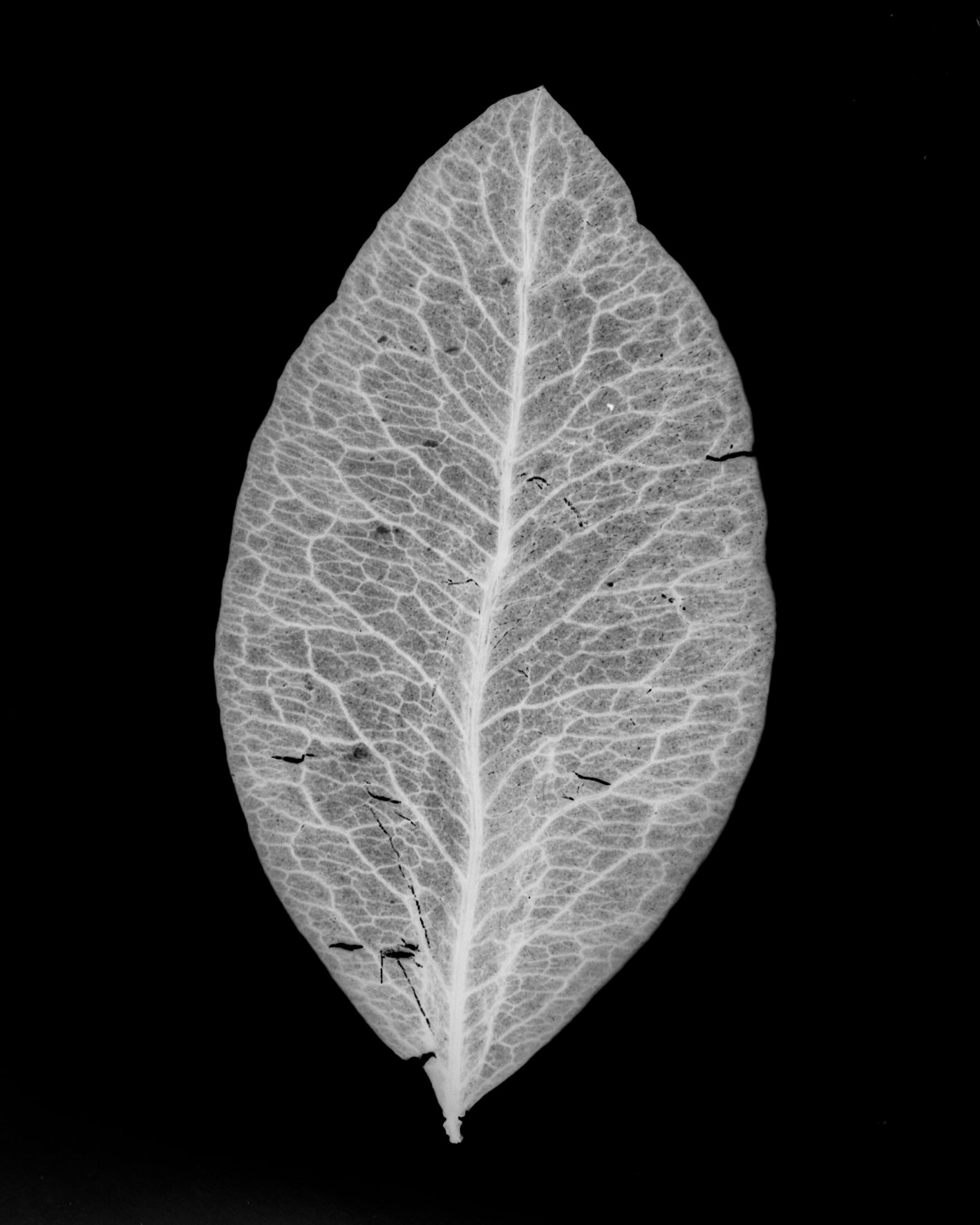
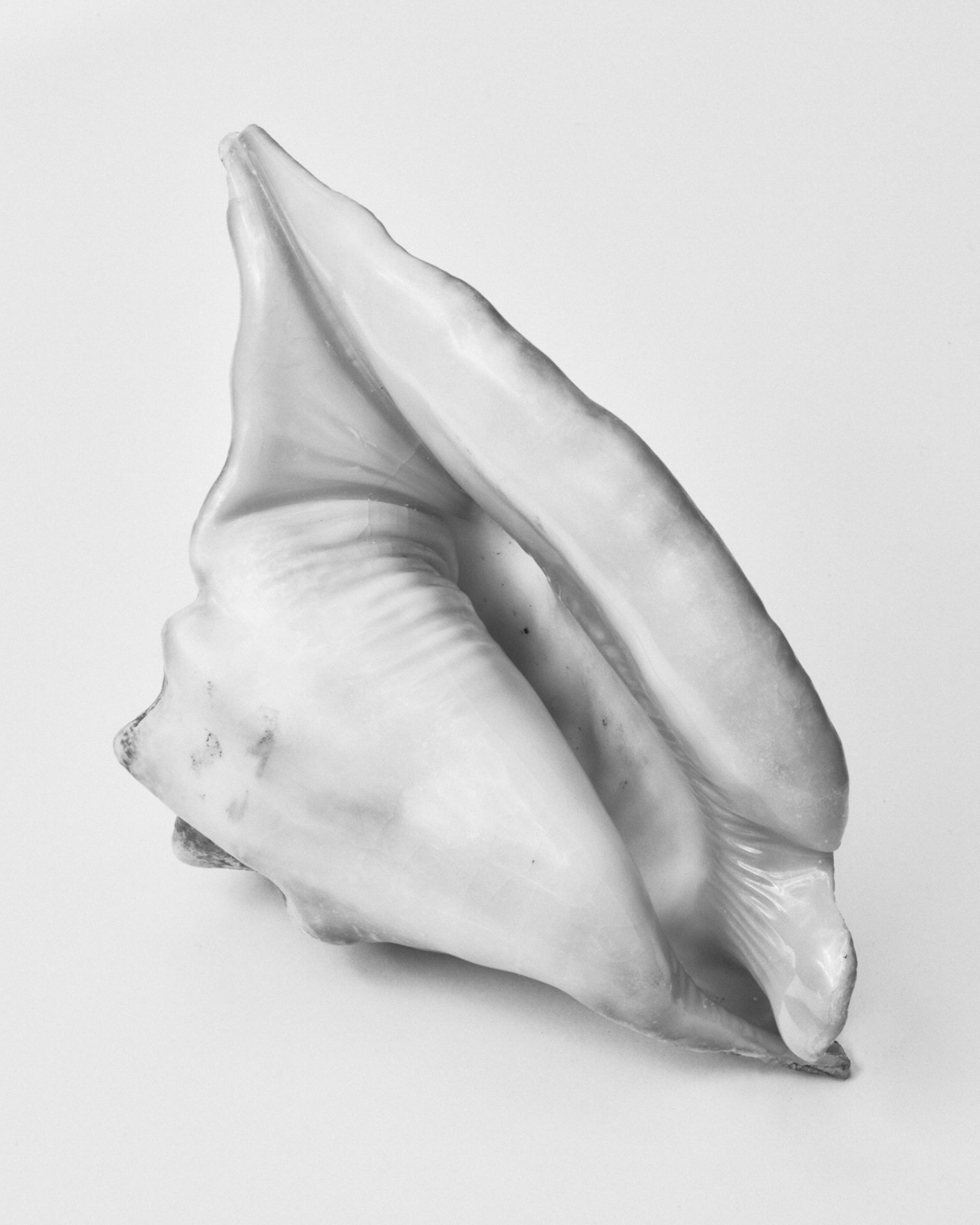
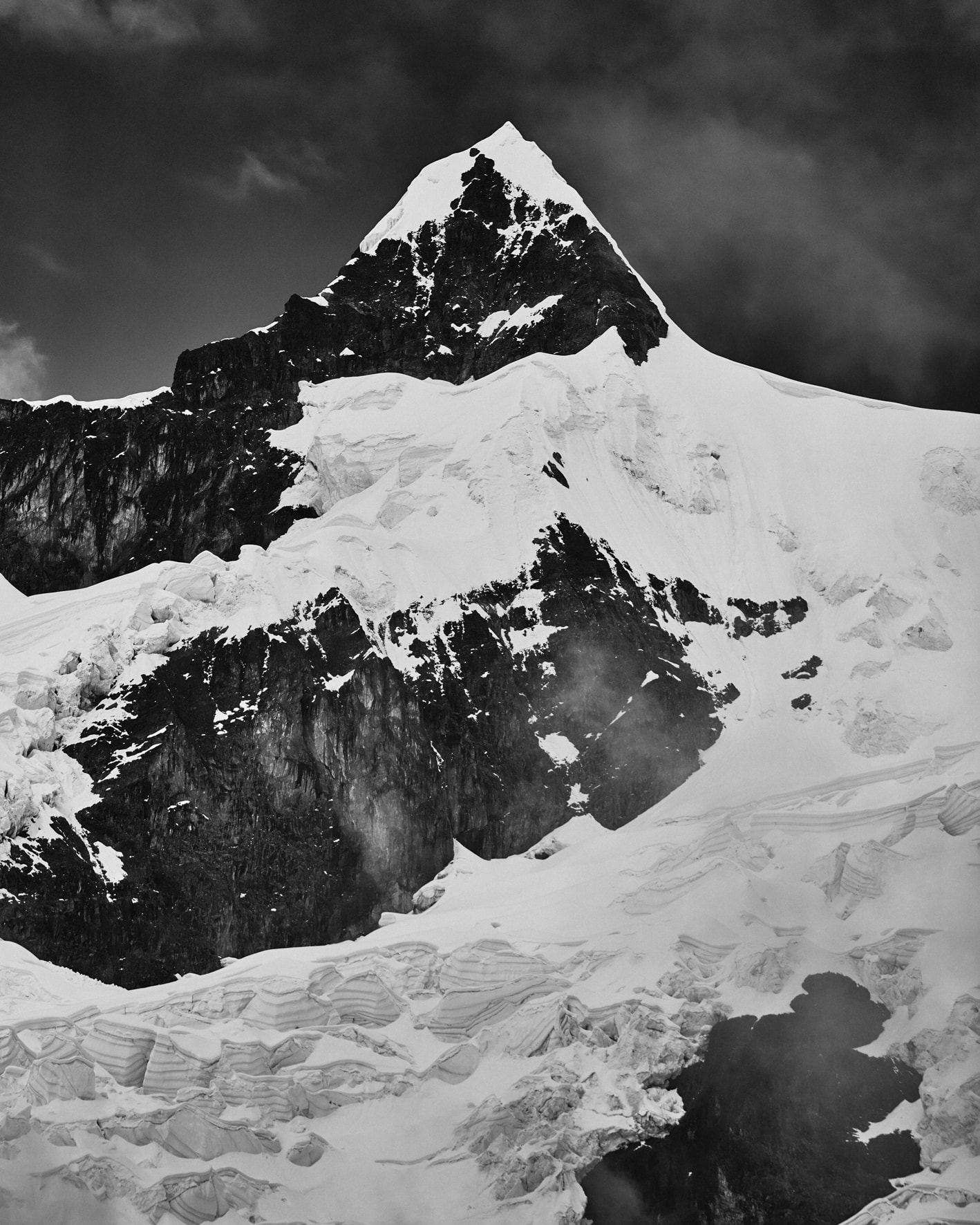


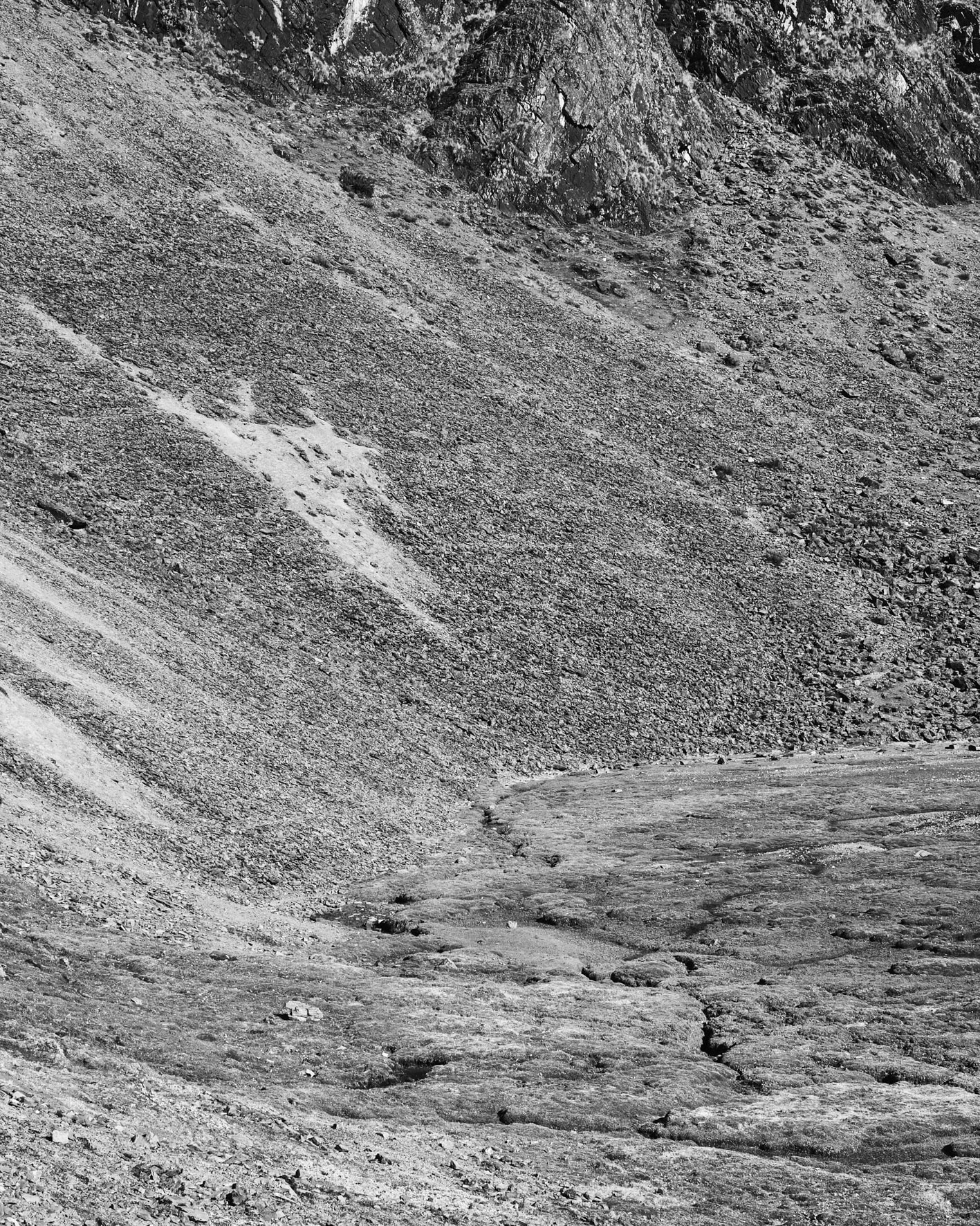
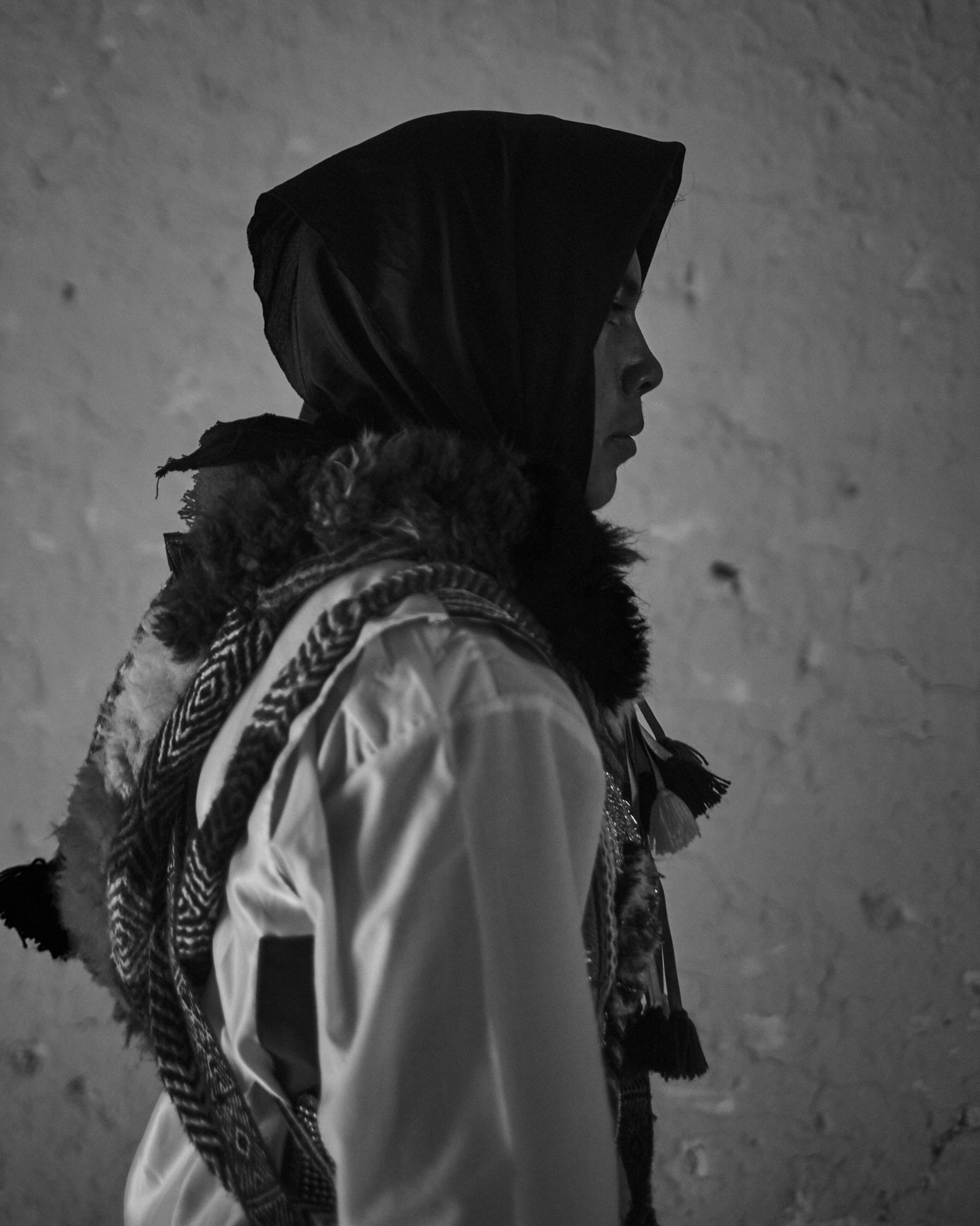
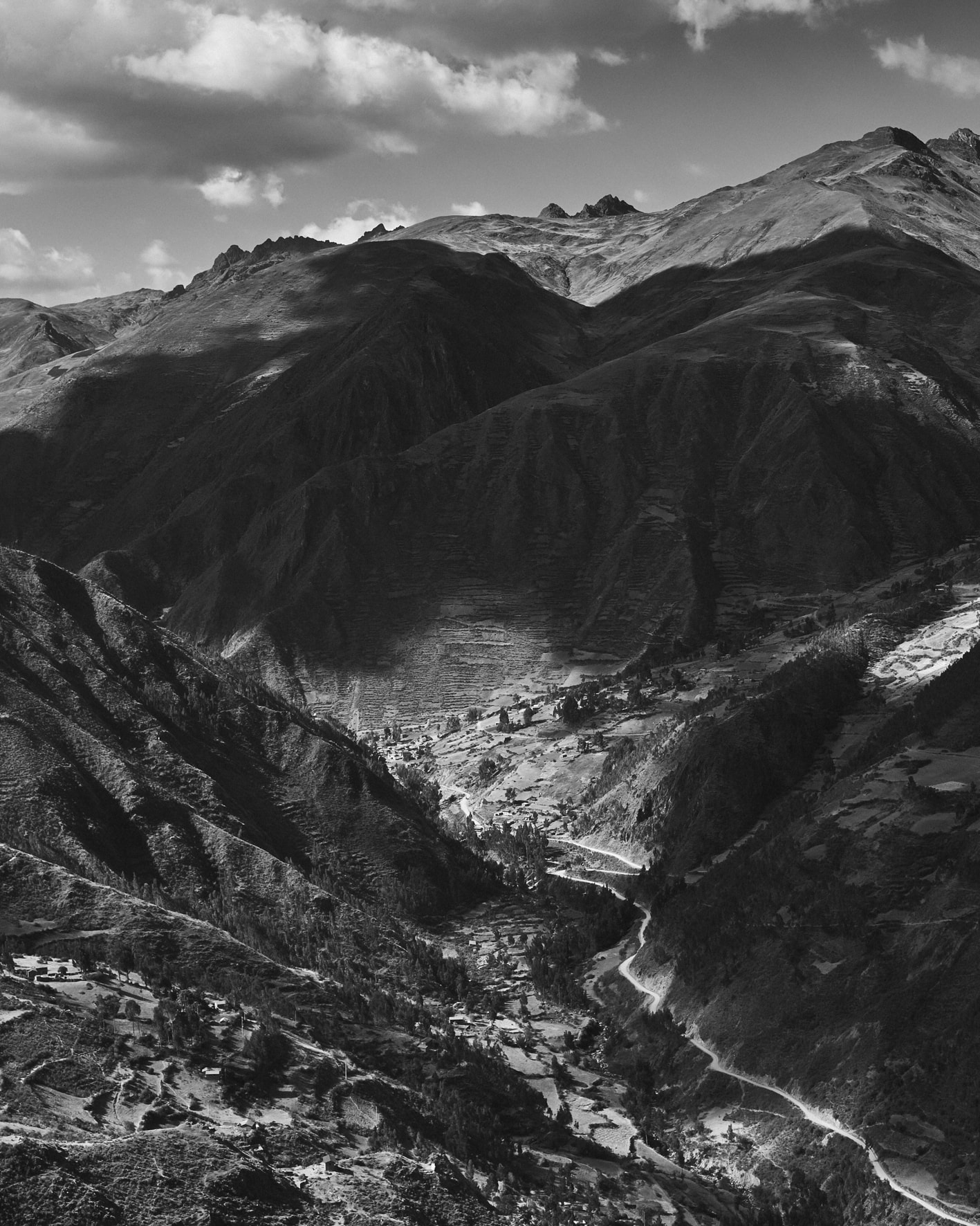
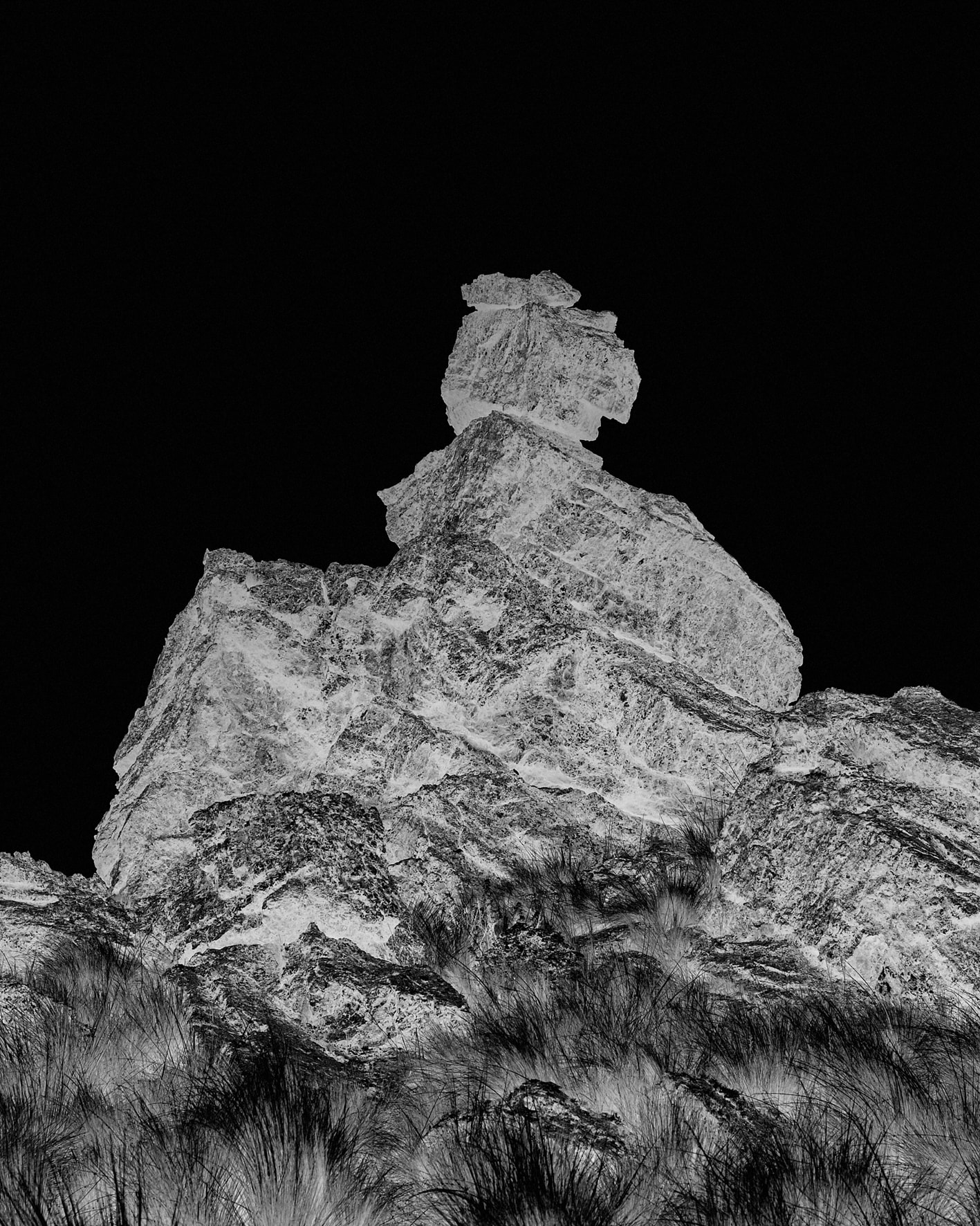

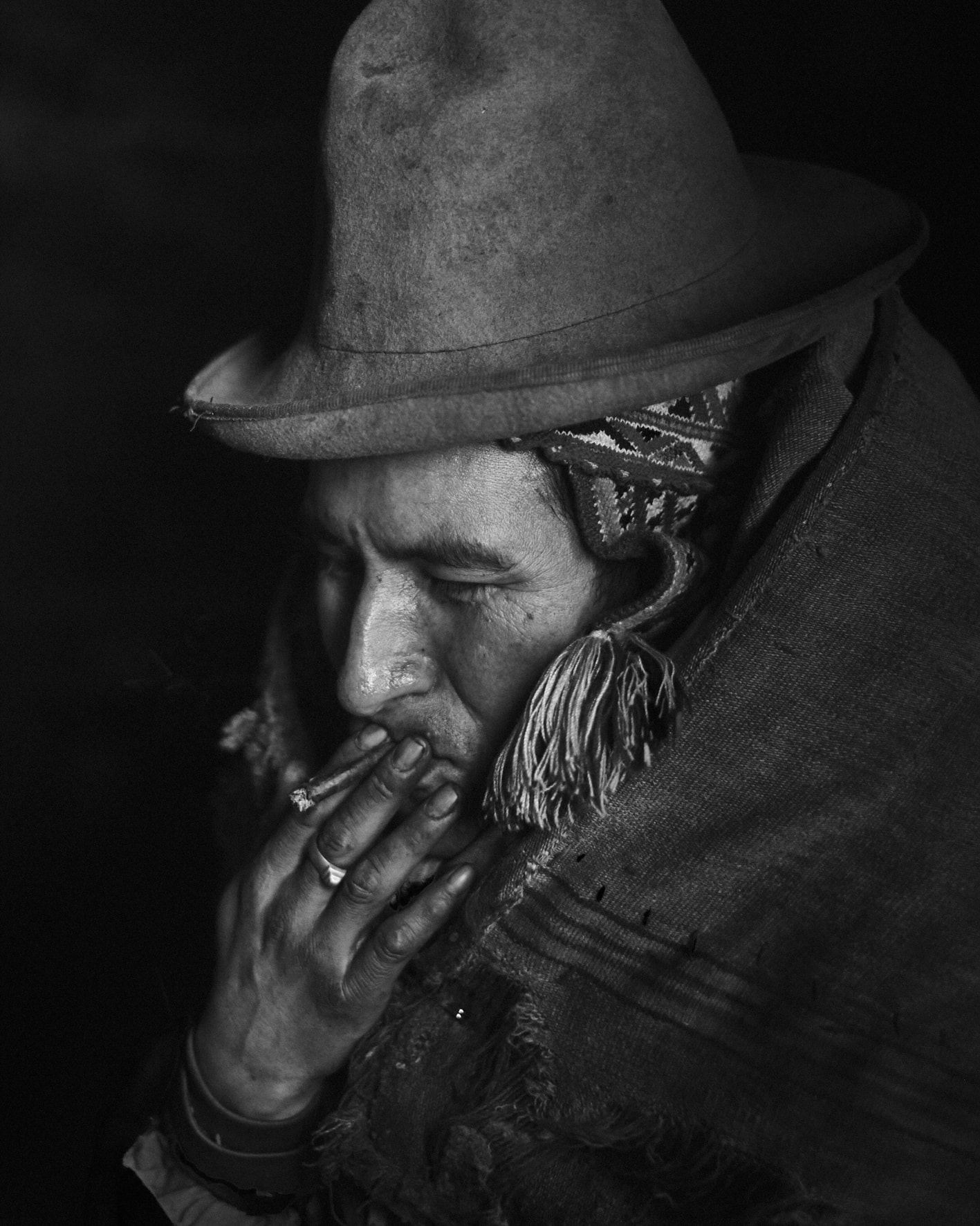
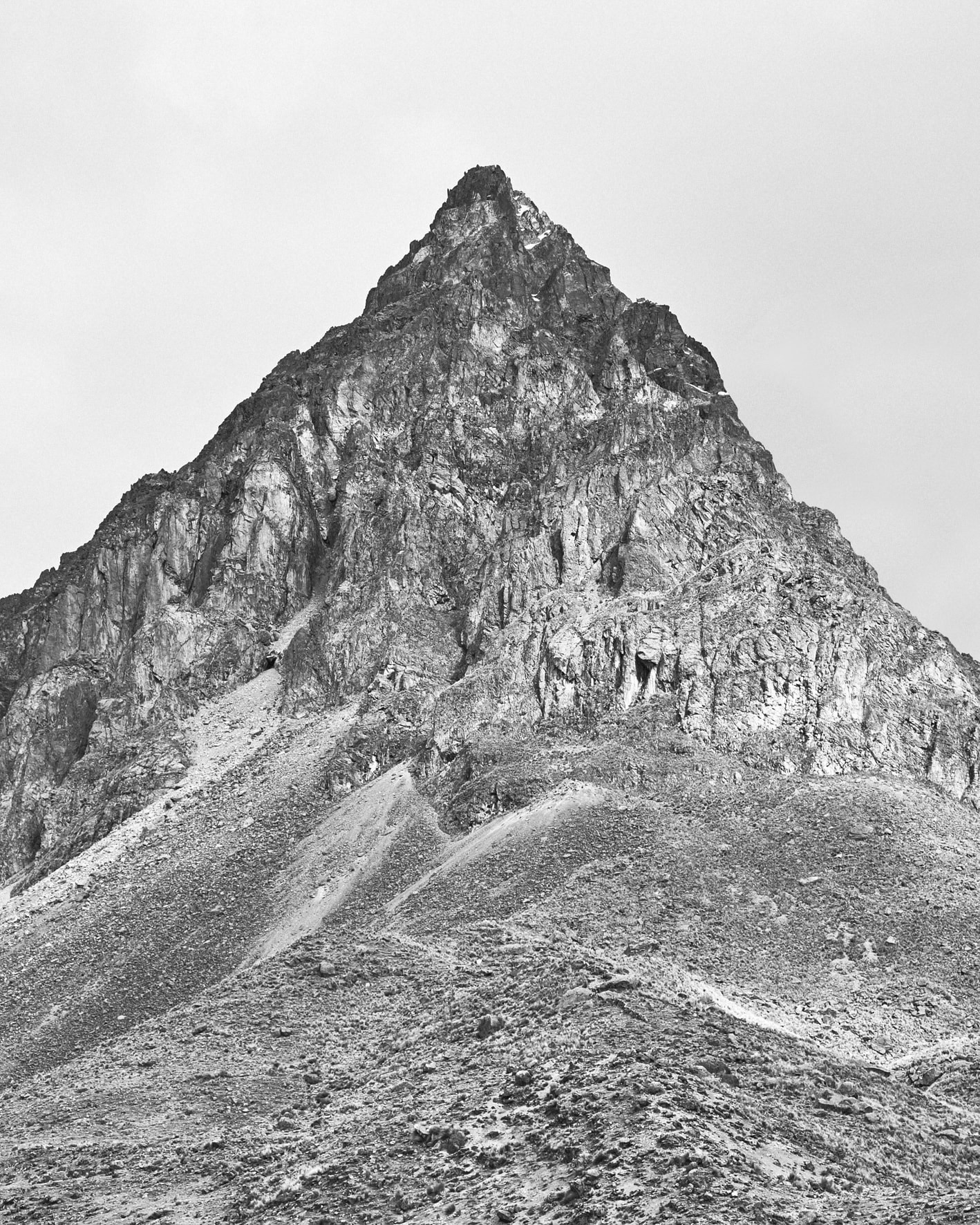
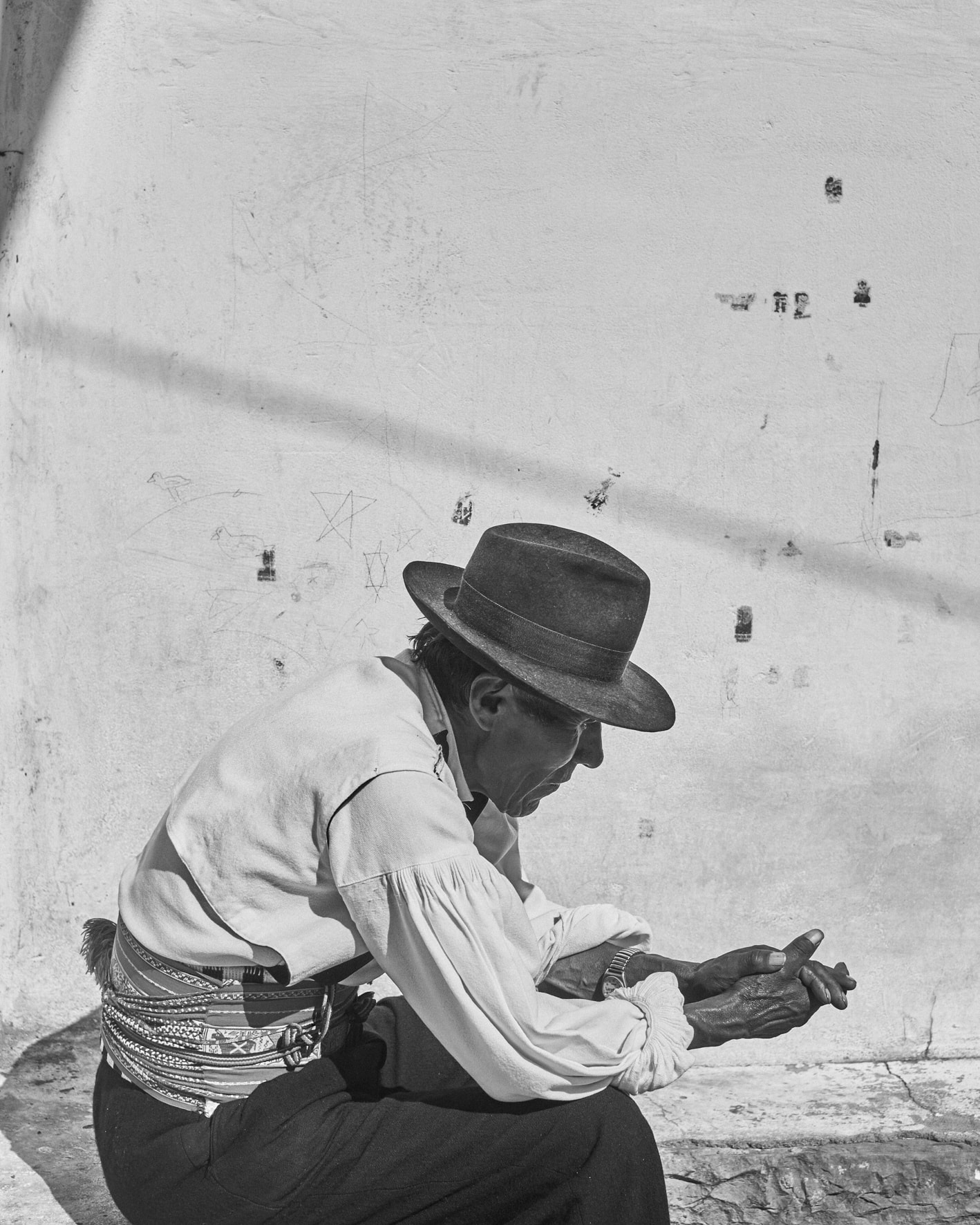
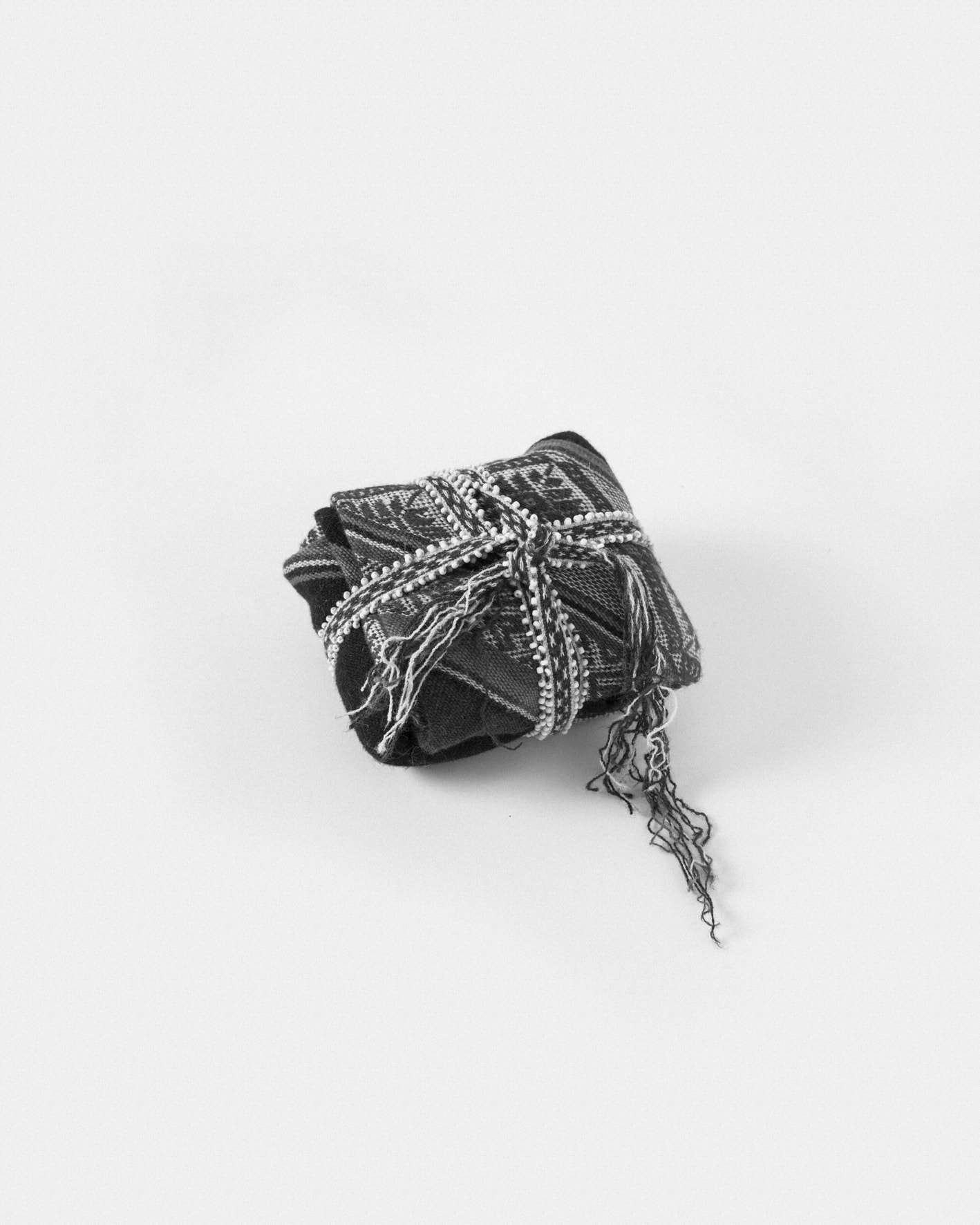


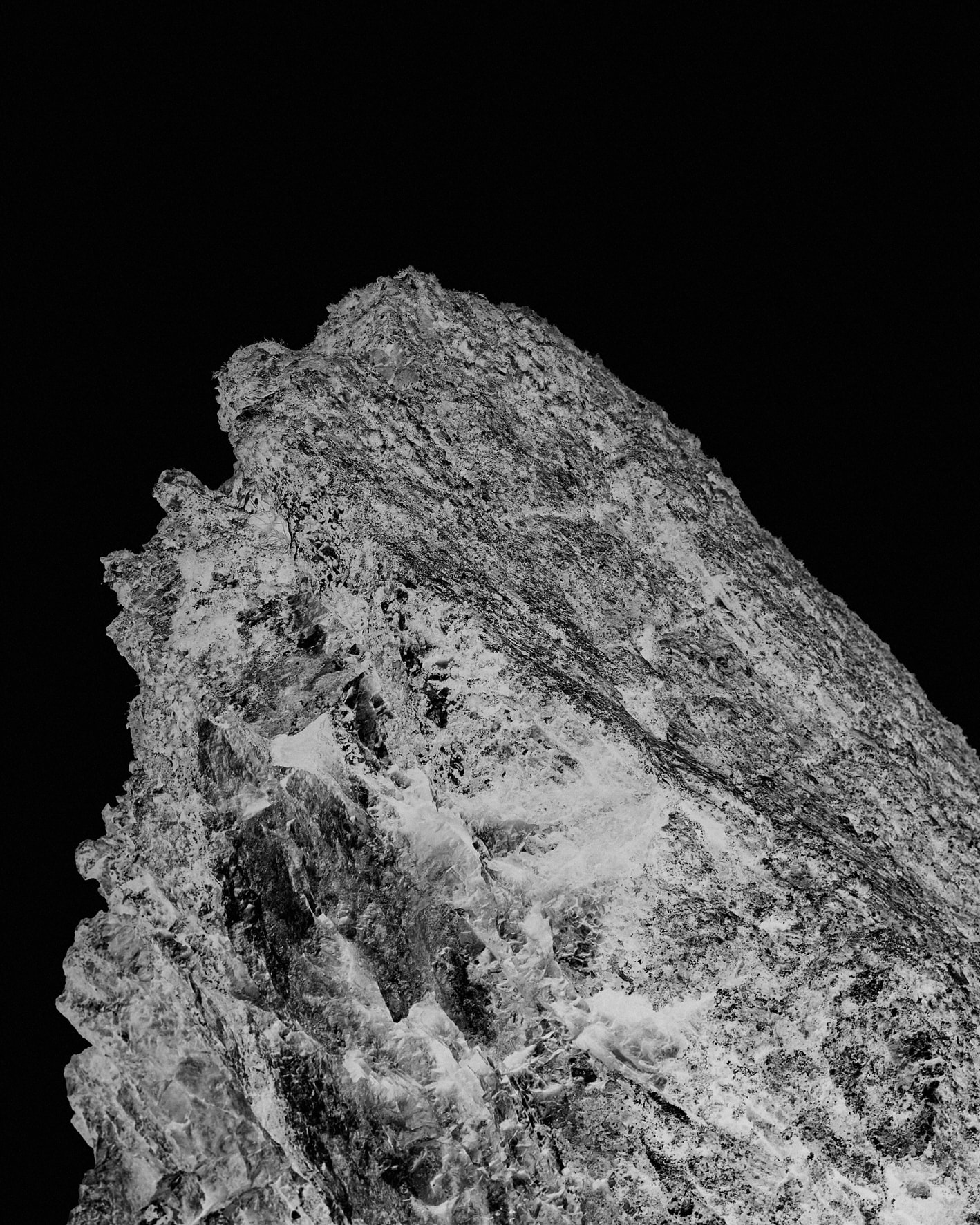





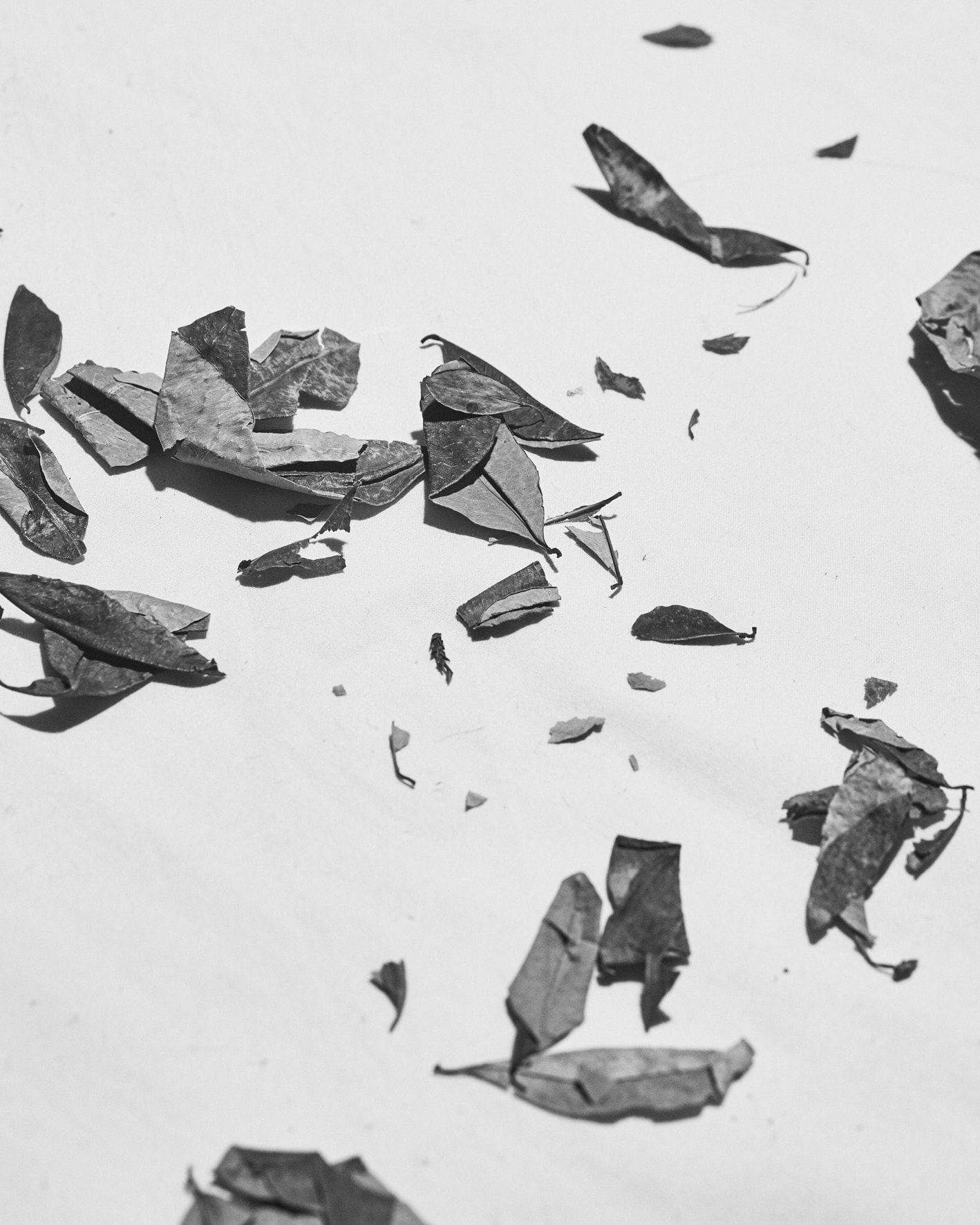
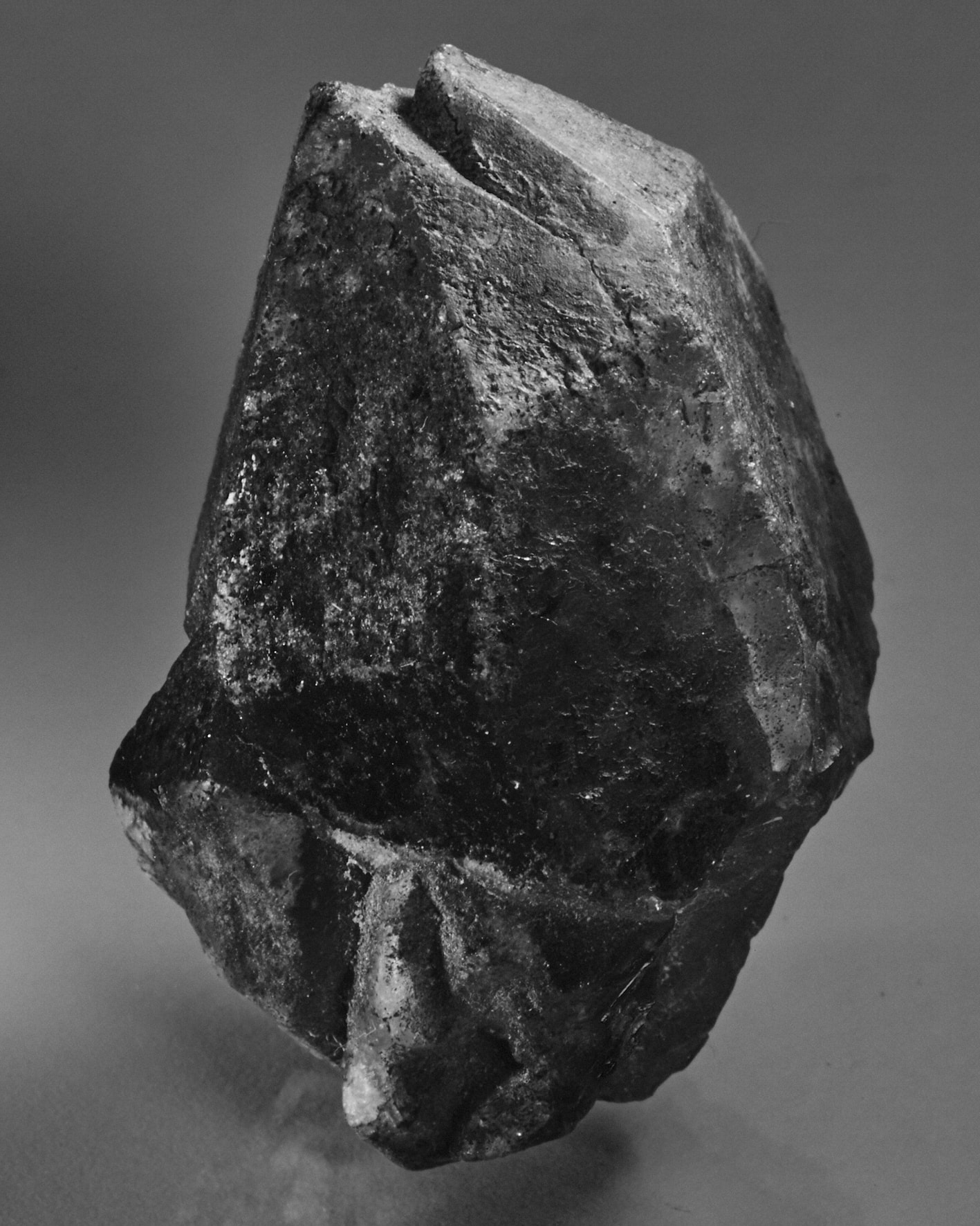

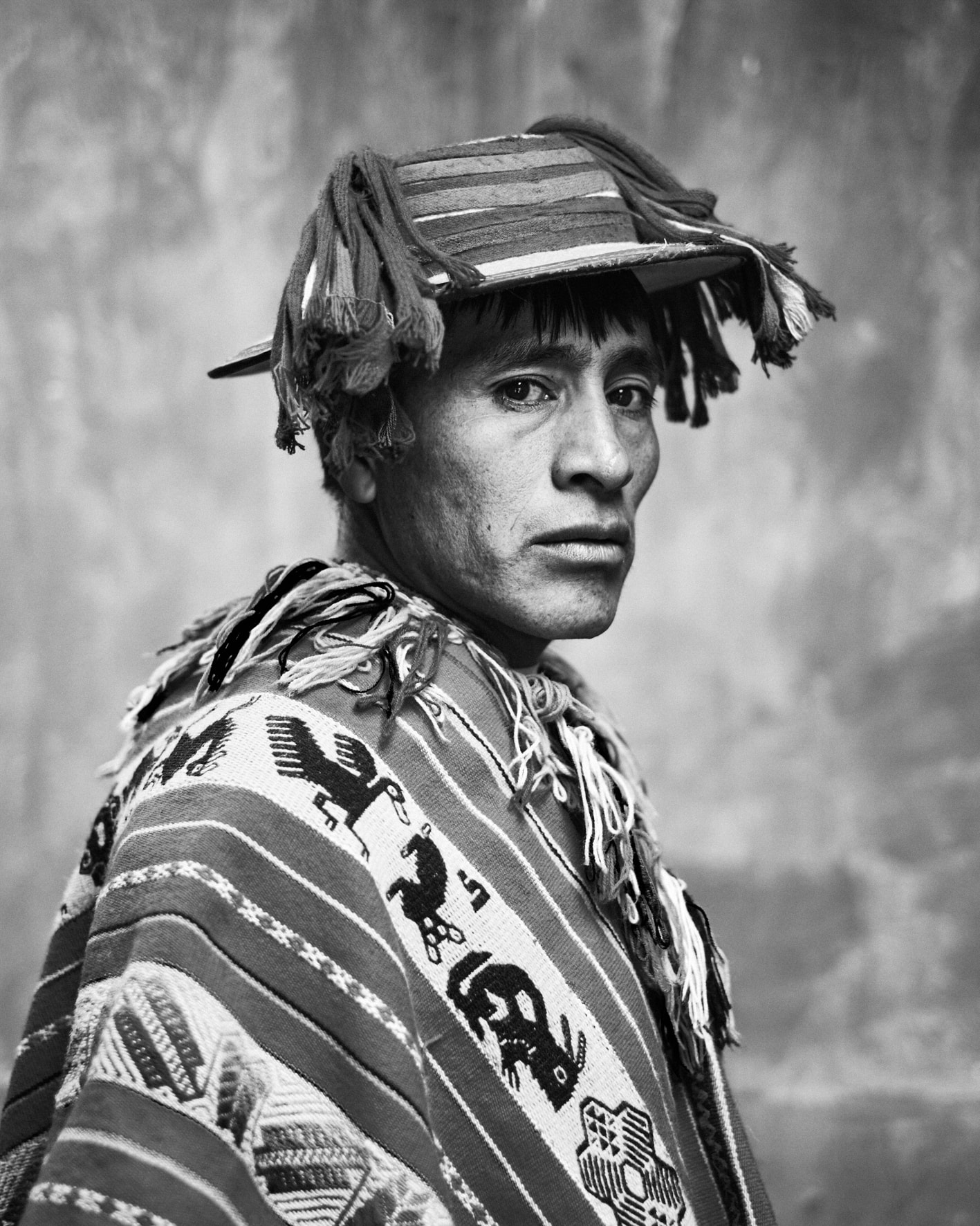

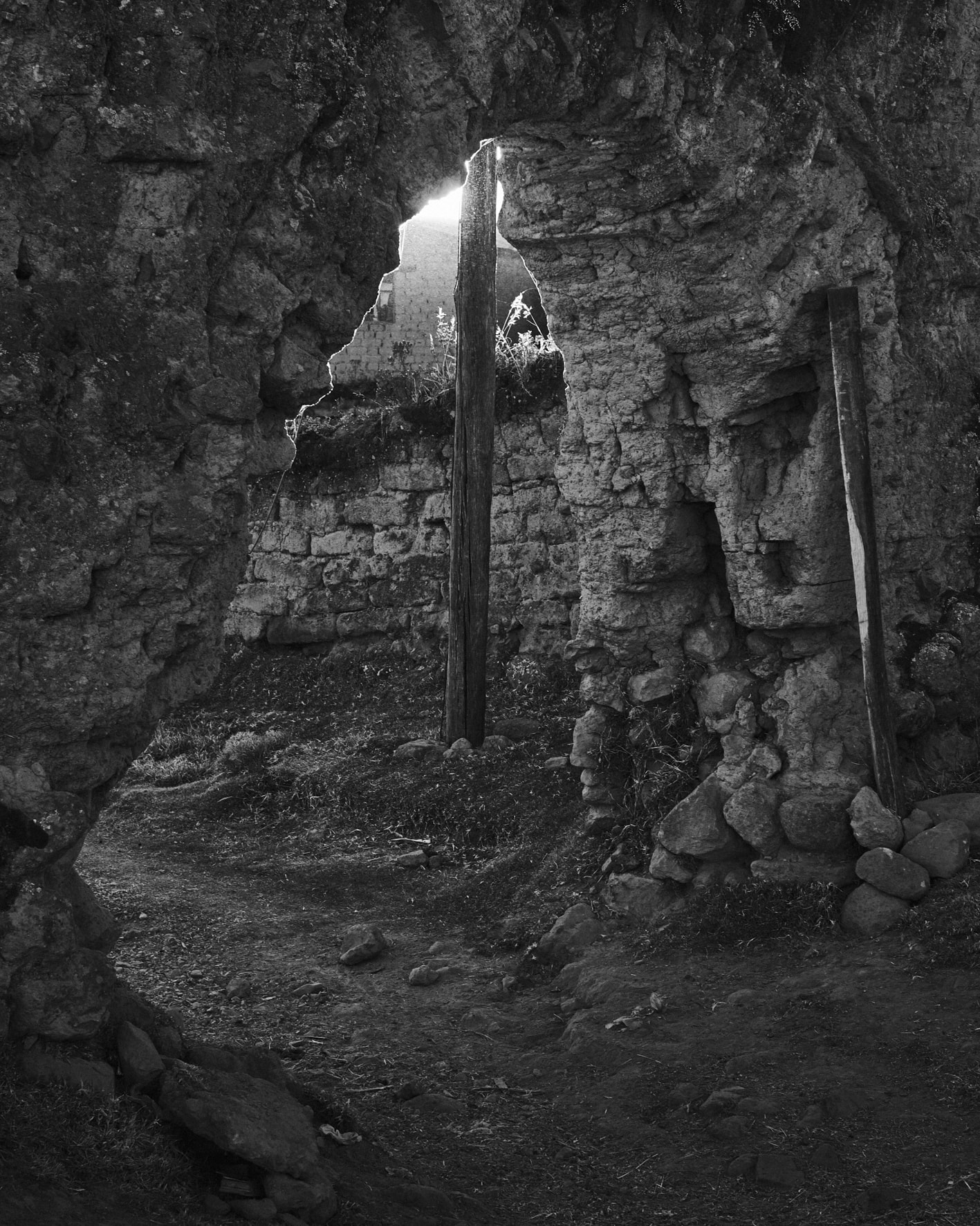
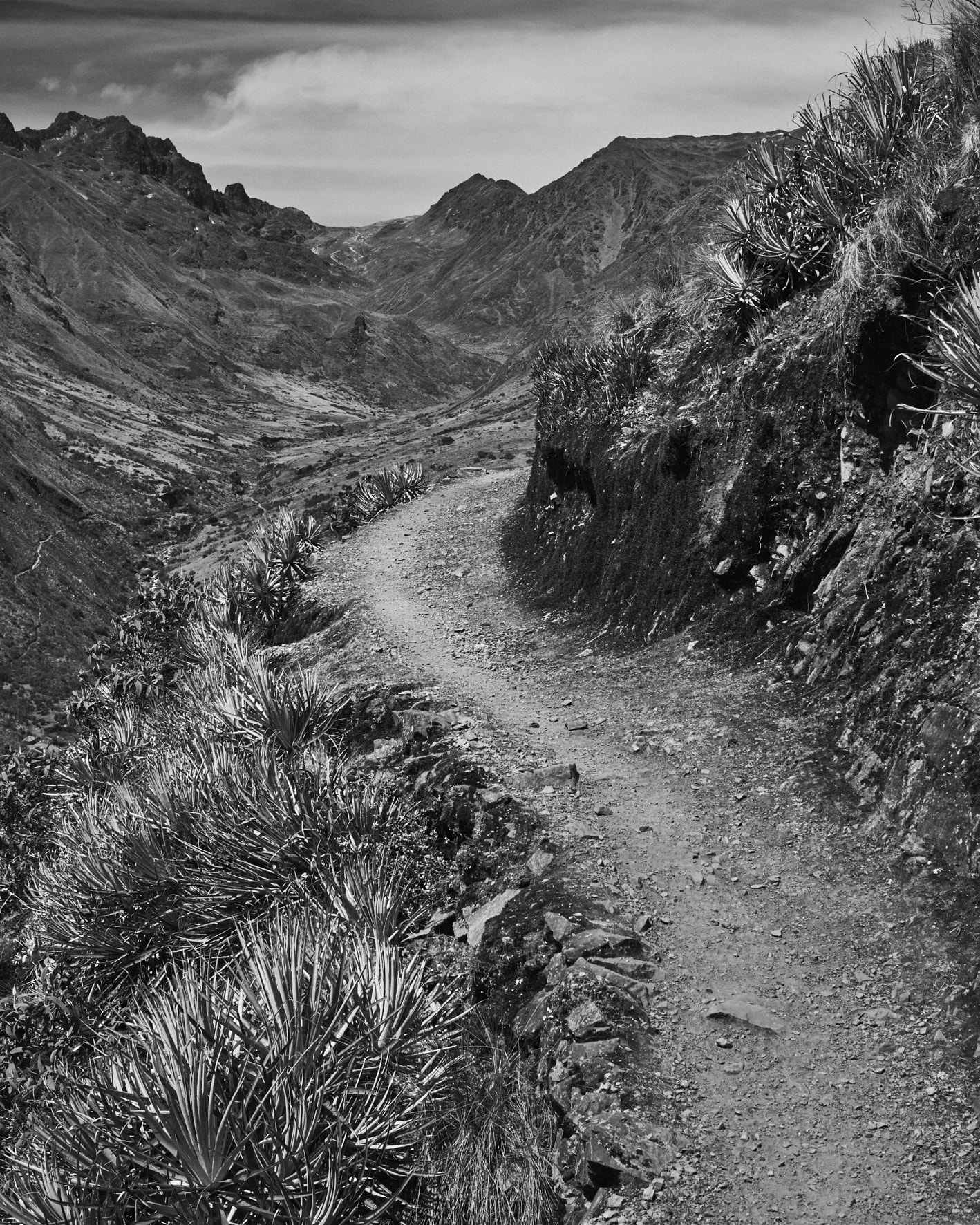
A Spiritual Geography of the Highlands
(2017-2019)
The photographic documentation project A Spiritual Geography of the Highlands is shown as a visual inventory of the spiritual imagery of the South Peruvian Andes.
It doesn’t have the ambition to be a complete record of the mythical and cultural elements of a reality in which shamanism and popular cults cohabit with other concurrent religious systems. The main purpose is to generate reflection in the reader about the importance of the conservation of ancestral cultures and the deep contribution that a different ecosystem of interpretations of reality can offer.
A Spiritual Geography of the Highlands is a project that began in 2016 when I went to live in the Andes of Cusco, where I had the opportunity to immerse myself in the great cultural wealth that these lands have been able to preserve. Living in the mountains of Cusco means being in continuous contact with an ancestral wisdom, expressed not only in a pre-Inca language such as Quechua, but also through small daily ritual gestures that show a close relationship of affection and respect between the man and his environment. An exemplary symbol of this relationship is the belief in the Apus, the guardian spirits incarnated in the mountains. According to the inhabitants of these lands, the Apus are supernatural entities, true masters and protectors of all existing things and to which the inhabitants show daily respect in the form of different dedicating offerings.
Andean spirituality is a fragmented world of an eminently traditional nature, which is deeply connected with agricultural and pastoral practices. This fragmentation is also reflected in the inventory proposed. The intention, therefore, is to invite the viewer to consider the partiality of the project as an intrinsic characteristic of the subject it is documenting; this is justified, on the one hand, by the lack of a coherent narrative within a belief system influenced by other cultures, and on the other hand, finds its reason in the large number of symbols and customs that are still to be investigated.
Popular mystical beliefs are considered to predate the times of the Inca, which sought in part to overcome them by building an institutionalized polytheistic system; but these ancient beliefs survived almost as a clandestine religion in parallel. It is also known that they resisted the imposition of the Catholic religion in colonial times, avoiding extinction and oblivion as has happened with other cultures in other corners of the planet, thus creating in the South-Peruvian Andes a kind of official syncretism among these two worlds. In modern times, on the other hand, the Andean spiritual practice is fighting against the process of globalization, as well as against the eventuality of a gradual construction of a single “monochromatic” society. From this idea comes the project of documentation, which in certain ways recalls and rescues the cosmo-vision of our ancestors that is in danger of extinction.
In the need to define the essence of the spiritual vision of the Andes, we find answers in every manifestation of the contemporary Andean people and in their interpretation of the world. This visual inventory contemplates not only archetypal and symbolic aspects of various elements, but also those traditional uses that these possess in ritual contexts, in addition to the meaning they conserve in the collective imagery. To achieve this communicative purpose, the inventory is limited to the search for representative elements of a set of beliefs that have been preserved despite the influences of other cultures.
I hope that this project could awake the sensibility of the reader about the relevance of the Andean conception of the world, which in general terms is only a small example of the enormous cultural diversity present in our planet and that at accelerated rates is disappearing.
≠
Una Geografía Espiritual de las Tierras Altas
El proyecto de documentación fotográfica Una Geografía Espiritual de las Tierras Altas se muestra como un inventario visual del imaginario espiritual de los Andes peruanos del Sur.
No tiene la ambición de ser un registro completo de los elementos míticos y culturales de una realidad en la que el chamanismo y los cultos populares conviven con otros sistemas religiosos concurrentes. El objetivo principal es generar reflexión en el lector sobre la importancia de la conservación de las culturas ancestrales y la profunda contribución que un diferente ecosistema de interpretaciones de la realidad puede ofrecer.
Una Geografía Espiritual de las Tierras Altas es un proyecto que empezó a principios del año 2016 cuando fui a vivir a los Andes del Cusco, donde tuve la oportunidad de empaparme de la gran riqueza cultural que estas tierras han sabido conservar. Vivir en las montañas del Cusco significa estar en contacto continuo con una sabiduría ancestral, expresada no solamente en un idioma pre-incaico como es el quechua, sino también a través de pequeños gestos rituales cotidianos que manifiestan una estrecha relación de cariño y respeto entre el hombre y su entorno. Símbolo ejemplar de esta relación es la creencia en los Apus, los espíritus tutelares encarnados en los cerros. Según los pobladores de estas tierras los Apus son entidades sobrenaturales, verdaderos amos y protectores de todas las cosas existentes y a los cuales los habitantes muestran cotidianamente respeto, dedicándoles ofrendas de diferentes naturalezas.
La espiritualidad andina es un mundo fragmentado, de carácter eminentemente tradicional y conectada de manera profunda con las prácticas agrícolas y pastoriles. Esta fragmentación se refleja también en el mismo inventario propuesto. La intención, por tanto, es invitar al espectador a considerar la parcialidad del proyecto como una característica intrínseca de la misma documentación, que se justifica, por un lado, por la falta de una narración coherente dentro de un sistema de creencias influenciado por culturas ajenas, y por otro lado, encuentra su razón en la gran cantidad de símbolos y costumbres que faltan por investigar.
Las creencias místicas populares se consideran precedentes también a los tiempos de los Inca, los cuales buscaron en parte superarlas construyendo un sistema politeísta institucionalizado; pero estas antiguas creencias sobrevivieron casi como una religión clandestina de manera paralela. También se sabe que resistieron a la imposición de la religión católica en época colonial, evitando la extinción y el olvido como ha pasado con otras culturas en otros rincones del planeta, convirtiéndose así en los Andes sur-peruanos a una especie de sincretismo oficial entre estos dos mundos. En tiempos modernos, en cambio, la practica espiritual andina está luchando contra el proceso de globalización, tanto como contra la eventualidad de una gradual construcción de una única sociedad ”monocromática”. De esta idea nace el proyecto de documentación que en ciertas formas recuerda y rescata la cosmo-visión de nuestros ancestros que se encuentra hoy en peligro de extinción.
En la necesidad de definir la esencia de la visión espiritual de los Andes, encontramos respuestas en cada manifestación del hombre andino contemporáneo y en su interpretación del mundo. Este inventario visual contempla no sólo aspectos arquetípicos y simbólicos de diversos elementos, sino que también aquellos usos tradicionales que poseen estos en contextos rituales, además del significado que conservan en el imaginario colectivo. Para conseguir este propósito comunicativo, el inventario se limita a la búsqueda de elementos representativos de un conjunto de creencias que se han preservado no obstante las influencias de culturas ajenas.
Tengo la esperanza que este proyecto pueda despertar la sensibilidad del lector acerca de la relevancia de la concepción andina del mundo, que en termino general es solo un pequeño ejemplo de la enorme diversidad cultural presente en nuestro planeta y que a velocidades aceleradas está desapareciendo.
≠
The book is a limited edition of 200 signed copies printed on a Cyclus offset 200 g paper sewn with thread.
Measurements: 210 mm x 140 mm
Number of pages: 72
If you are interested in acquiring one book please feel free to send me an email.
The book is also available in the following places:
Babel
Calle Coronel Inclán 300, Miraflores Lima, Peru
Alqa - Galería de Expresiones Andinas
Chaupi Calle, Ollantaytambo, Cusco, Peru
(2017-2019)
The photographic documentation project A Spiritual Geography of the Highlands is shown as a visual inventory of the spiritual imagery of the South Peruvian Andes.
It doesn’t have the ambition to be a complete record of the mythical and cultural elements of a reality in which shamanism and popular cults cohabit with other concurrent religious systems. The main purpose is to generate reflection in the reader about the importance of the conservation of ancestral cultures and the deep contribution that a different ecosystem of interpretations of reality can offer.
A Spiritual Geography of the Highlands is a project that began in 2016 when I went to live in the Andes of Cusco, where I had the opportunity to immerse myself in the great cultural wealth that these lands have been able to preserve. Living in the mountains of Cusco means being in continuous contact with an ancestral wisdom, expressed not only in a pre-Inca language such as Quechua, but also through small daily ritual gestures that show a close relationship of affection and respect between the man and his environment. An exemplary symbol of this relationship is the belief in the Apus, the guardian spirits incarnated in the mountains. According to the inhabitants of these lands, the Apus are supernatural entities, true masters and protectors of all existing things and to which the inhabitants show daily respect in the form of different dedicating offerings.
Andean spirituality is a fragmented world of an eminently traditional nature, which is deeply connected with agricultural and pastoral practices. This fragmentation is also reflected in the inventory proposed. The intention, therefore, is to invite the viewer to consider the partiality of the project as an intrinsic characteristic of the subject it is documenting; this is justified, on the one hand, by the lack of a coherent narrative within a belief system influenced by other cultures, and on the other hand, finds its reason in the large number of symbols and customs that are still to be investigated.
Popular mystical beliefs are considered to predate the times of the Inca, which sought in part to overcome them by building an institutionalized polytheistic system; but these ancient beliefs survived almost as a clandestine religion in parallel. It is also known that they resisted the imposition of the Catholic religion in colonial times, avoiding extinction and oblivion as has happened with other cultures in other corners of the planet, thus creating in the South-Peruvian Andes a kind of official syncretism among these two worlds. In modern times, on the other hand, the Andean spiritual practice is fighting against the process of globalization, as well as against the eventuality of a gradual construction of a single “monochromatic” society. From this idea comes the project of documentation, which in certain ways recalls and rescues the cosmo-vision of our ancestors that is in danger of extinction.
In the need to define the essence of the spiritual vision of the Andes, we find answers in every manifestation of the contemporary Andean people and in their interpretation of the world. This visual inventory contemplates not only archetypal and symbolic aspects of various elements, but also those traditional uses that these possess in ritual contexts, in addition to the meaning they conserve in the collective imagery. To achieve this communicative purpose, the inventory is limited to the search for representative elements of a set of beliefs that have been preserved despite the influences of other cultures.
I hope that this project could awake the sensibility of the reader about the relevance of the Andean conception of the world, which in general terms is only a small example of the enormous cultural diversity present in our planet and that at accelerated rates is disappearing.
≠
Una Geografía Espiritual de las Tierras Altas
El proyecto de documentación fotográfica Una Geografía Espiritual de las Tierras Altas se muestra como un inventario visual del imaginario espiritual de los Andes peruanos del Sur.
No tiene la ambición de ser un registro completo de los elementos míticos y culturales de una realidad en la que el chamanismo y los cultos populares conviven con otros sistemas religiosos concurrentes. El objetivo principal es generar reflexión en el lector sobre la importancia de la conservación de las culturas ancestrales y la profunda contribución que un diferente ecosistema de interpretaciones de la realidad puede ofrecer.
Una Geografía Espiritual de las Tierras Altas es un proyecto que empezó a principios del año 2016 cuando fui a vivir a los Andes del Cusco, donde tuve la oportunidad de empaparme de la gran riqueza cultural que estas tierras han sabido conservar. Vivir en las montañas del Cusco significa estar en contacto continuo con una sabiduría ancestral, expresada no solamente en un idioma pre-incaico como es el quechua, sino también a través de pequeños gestos rituales cotidianos que manifiestan una estrecha relación de cariño y respeto entre el hombre y su entorno. Símbolo ejemplar de esta relación es la creencia en los Apus, los espíritus tutelares encarnados en los cerros. Según los pobladores de estas tierras los Apus son entidades sobrenaturales, verdaderos amos y protectores de todas las cosas existentes y a los cuales los habitantes muestran cotidianamente respeto, dedicándoles ofrendas de diferentes naturalezas.
La espiritualidad andina es un mundo fragmentado, de carácter eminentemente tradicional y conectada de manera profunda con las prácticas agrícolas y pastoriles. Esta fragmentación se refleja también en el mismo inventario propuesto. La intención, por tanto, es invitar al espectador a considerar la parcialidad del proyecto como una característica intrínseca de la misma documentación, que se justifica, por un lado, por la falta de una narración coherente dentro de un sistema de creencias influenciado por culturas ajenas, y por otro lado, encuentra su razón en la gran cantidad de símbolos y costumbres que faltan por investigar.
Las creencias místicas populares se consideran precedentes también a los tiempos de los Inca, los cuales buscaron en parte superarlas construyendo un sistema politeísta institucionalizado; pero estas antiguas creencias sobrevivieron casi como una religión clandestina de manera paralela. También se sabe que resistieron a la imposición de la religión católica en época colonial, evitando la extinción y el olvido como ha pasado con otras culturas en otros rincones del planeta, convirtiéndose así en los Andes sur-peruanos a una especie de sincretismo oficial entre estos dos mundos. En tiempos modernos, en cambio, la practica espiritual andina está luchando contra el proceso de globalización, tanto como contra la eventualidad de una gradual construcción de una única sociedad ”monocromática”. De esta idea nace el proyecto de documentación que en ciertas formas recuerda y rescata la cosmo-visión de nuestros ancestros que se encuentra hoy en peligro de extinción.
En la necesidad de definir la esencia de la visión espiritual de los Andes, encontramos respuestas en cada manifestación del hombre andino contemporáneo y en su interpretación del mundo. Este inventario visual contempla no sólo aspectos arquetípicos y simbólicos de diversos elementos, sino que también aquellos usos tradicionales que poseen estos en contextos rituales, además del significado que conservan en el imaginario colectivo. Para conseguir este propósito comunicativo, el inventario se limita a la búsqueda de elementos representativos de un conjunto de creencias que se han preservado no obstante las influencias de culturas ajenas.
Tengo la esperanza que este proyecto pueda despertar la sensibilidad del lector acerca de la relevancia de la concepción andina del mundo, que en termino general es solo un pequeño ejemplo de la enorme diversidad cultural presente en nuestro planeta y que a velocidades aceleradas está desapareciendo.
≠
The book is a limited edition of 200 signed copies printed on a Cyclus offset 200 g paper sewn with thread.
Measurements: 210 mm x 140 mm
Number of pages: 72
If you are interested in acquiring one book please feel free to send me an email.
The book is also available in the following places:
Babel
Calle Coronel Inclán 300, Miraflores Lima, Peru
Alqa - Galería de Expresiones Andinas
Chaupi Calle, Ollantaytambo, Cusco, Peru








